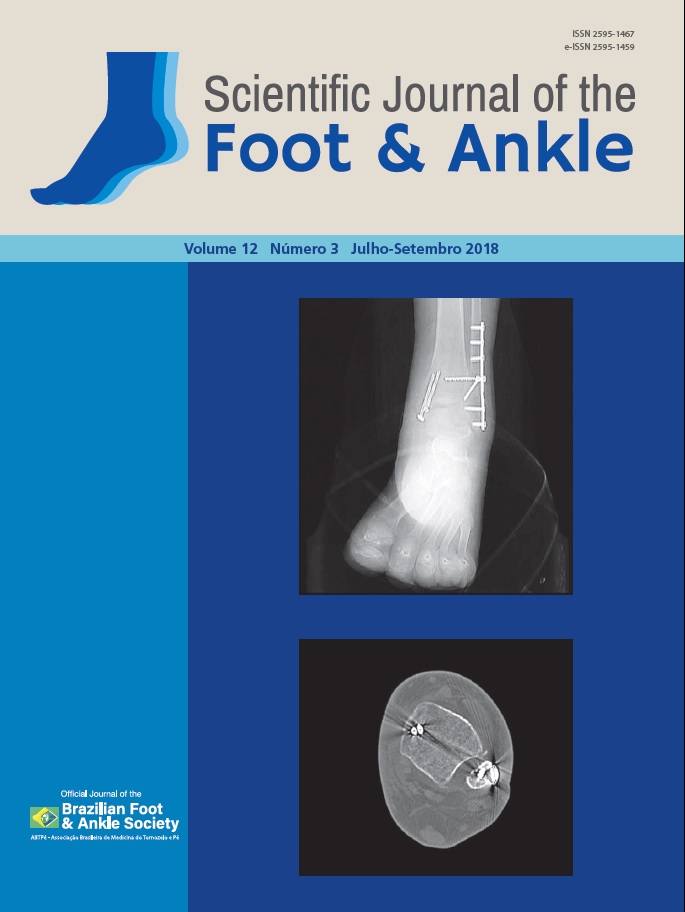Evaluation of the results of flexor hallucis longus tendon transfer for chronic Achilles tendinopathy
DOI:
https://doi.org/10.30795/scijfootankle.2018.v12.825Keywords:
Achilles tendon, Tendon transfer, TendinopathyAbstract
Objective: To demonstrate that transfer of the flexor hallucis longus (FHL) through a single access site for Achilles tendinosis provides good results and can allow satisfactory recovery of ankle flexion strength. Methods: This is a case-control study with 28 consecutive patients who underwent surgery for Achilles tendon debridement and FHL transfer between January 2009 and July 2015. The patients’ body mass index (BMI), plantar flexion strength and ankle dorsiflexion strength were assessed using an isokinetic dynamometer (Humac Norm model, CSMi) and the American Orthopaedic Foot and Ankle Society (AOFAS) ankle-hindfoot scale. Results: Of the 28 patients, 53.8% were women, and the mean age was 55 years. After a median follow-up of 3.1 years, the plantar flexion strength of the operated ankles was 26.42 Nm (± 2.18), and the dorsiflexion strength was 16 Nm (± 1.99). The final AOFAS score was 85.3 points, with 82.1%
of patients achieving good and excellent results. The results showed a significant difference in plantar flexion strength (p=0.0001) between the operated foot and the contralateral foot. No significant difference was found when comparing patients with different BMIs in relation to muscle strength and AOFAS score.
Conclusion: FHL transfer surgery using a single posteromedial route for chronic Achilles tendinopathy presents good functional results and is a safe technique with a low complication rate. Level of Evidence III; Therapeutic Studies; Case Control Study.




